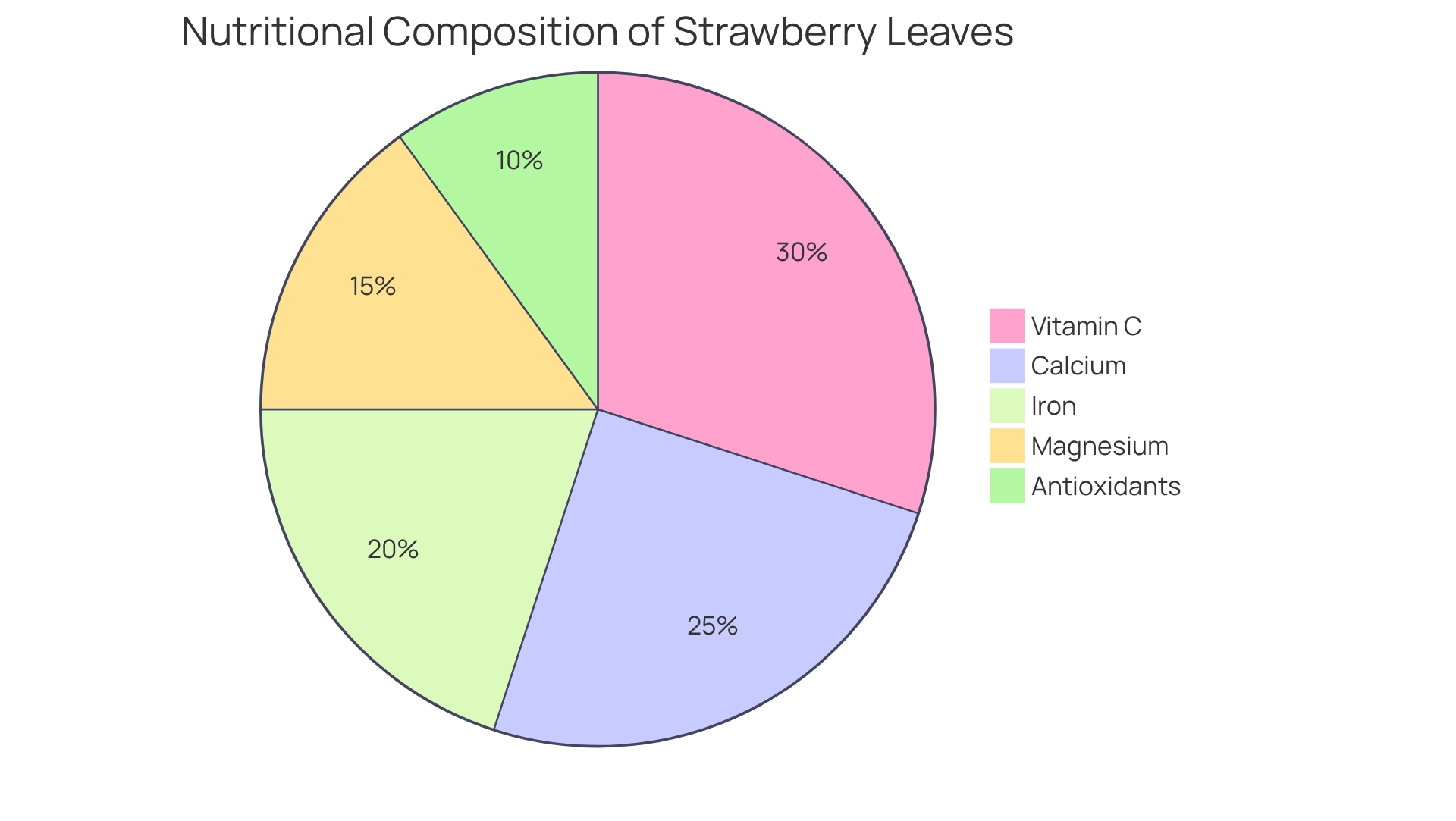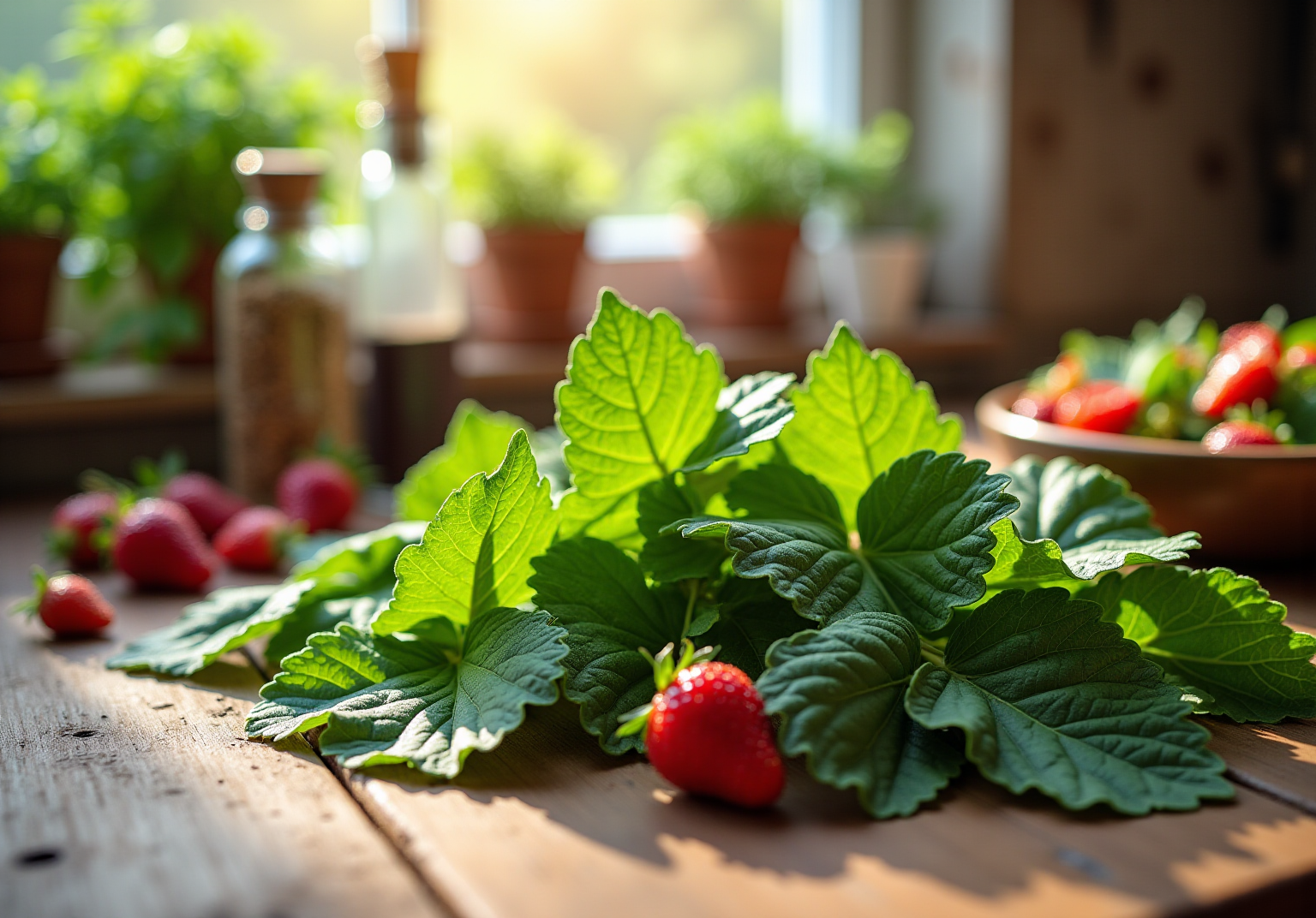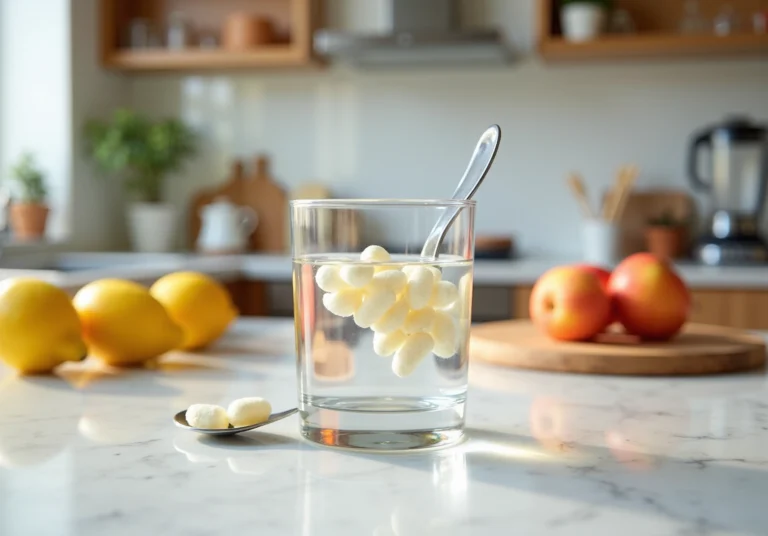Can You Eat Strawberry Leaves? Discover Their Benefits and Uses
Overview
Strawberry leaves are not only safe for consumption but also offer a range of health benefits. Rich in vitamins and antioxidants, these leaves can contribute positively to your diet.
Furthermore, the article outlines essential safety precautions for their consumption, explores potential culinary uses, and delves into their historical significance in herbal remedies.
As a result, strawberry leaves hold considerable value in a health-focused diet, inviting readers to consider their inclusion in everyday meals.
Introduction
In the quest for healthier eating habits, many individuals overlook the potential benefits of strawberry leaves. These often-discarded greens are not only safe to consume but are also rich in nutrients. Packed with vitamins, antioxidants, and minerals, strawberry leaves can enhance overall wellness. As culinary creativity flourishes, incorporating these leaves into meals offers a unique opportunity to reduce waste while boosting flavor and nutrition.
From salads to herbal teas, the versatility of strawberry leaves invites adventurous eaters to explore their culinary potential. This makes them a valuable addition to any health-conscious diet. Why not consider adding strawberry leaves to your next meal? Their benefits extend beyond nutrition, contributing to a more sustainable approach to eating.
Assess the Safety of Eating Strawberry Leaves
It is essential to guarantee the safety of berry foliage before consumption, particularly in relation to the question: can you eat strawberry leaves? Typically, these foliage components are safe to eat, raising the question: can you eat strawberry leaves? However, individuals with known allergies to berries should exercise caution regarding the question: can you eat strawberry leaves? It is advisable to thoroughly clean the foliage to ensure that when considering can you eat strawberry leaves, any pesticides or impurities that might be present are removed. For those exploring the question of can you eat strawberry leaves for the first time, starting with a small amount is prudent to observe for any negative reactions.
Furthermore, pregnant women and young children should consult a healthcare provider before consumption, particularly to address the question: can you eat strawberry leaves, as their digestive systems may be more sensitive. Traditionally, the foliage of the berry plant has been utilized in herbal remedies, raising the question of whether you can eat strawberry leaves and its potential health advantages are being reexamined in contemporary dietary habits. Including berry foliage in dishes raises the question of whether you can eat strawberry leaves, which not only minimizes waste but also contributes important antioxidants, vitamins, and minerals, making it a valuable addition to a health-focused diet. Notably, strawberries can help manage hypertension by promoting blood vessel relaxation and improving circulation. As Karla Walsh observes, ‘Strawberry foliage is herbaceous, fresh, earthy, and mildly sweet, which makes one wonder, can you eat strawberry leaves instead of discarding them?’ This highlights their appealing flavor profile, further encouraging their use in innovative health solutions.

Explore the Nutritional Benefits of Strawberry Leaves
Strawberry foliage is a powerhouse of nutrition, boasting a rich profile of vitamins and minerals, including vitamin C, calcium, iron, and magnesium. Furthermore, these foliage types are plentiful in antioxidants, which serve an essential function in fighting oxidative stress within the body. Historically, the foliage of the berry has been appreciated for its healing qualities, recognized for assisting digestion and alleviating inflammation. Research emphasizes their considerable nutritional potential, indicating that they are a neglected resource in the food sector, with uses extending from jams and jellies to alcoholic drinks.
An investigation into the nutritional advantages of the leaves of the Arbutus tree reveals a total flavonoid content of 449.75 ± 1.14 mg GAE/100 g FW, highlighting their health-enhancing attributes. In addition, Jana Šic Žlabur, a specialist in agricultural technology, observes that the foliage of the berry plant is frequently neglected, despite its various potential applications in the food and pharmaceutical industries. Including the foliage of berries in your diet raises the question of can you eat strawberry leaves, which not only improves your nutritional consumption but also promotes general health and well-being. As a result, they make a valuable enhancement to your dishes.

Incorporate Strawberry Leaves into Your Meals
When considering nutrition, many ask, can you eat strawberry leaves, and incorporating berry foliage into your dishes can enhance both flavor and nutrition. Here are several creative ways to utilize them:
- Salads: Fresh berry foliage adds a unique flavor and extra nutrients to salads, beautifully complementing other greens and fruits.
- Smoothies: Blend berry foliage into your smoothies for a vitamin boost without significantly changing the taste.
- Herbal Infusion: Create a revitalizing herbal infusion by soaking cleaned fruit foliage in hot water for 5-10 minutes.
- Soups and Stews: Chopped berry foliage can enrich soups and stews, providing additional flavor and health benefits.
- Pesto: Craft a distinctive pesto by blending berry foliage with nuts, garlic, and olive oil, perfect for pasta or as a spread.
These methods not only introduce new flavors but also allow you to enjoy the health benefits associated with berry foliage, making them a valuable addition to your culinary repertoire. As highlighted in the case study on culinary applications of berry foliage, incorporating them into your daily meals can enhance both taste and nutritional value. Remember, as Roisin Meaney reflects on the joy of cooking, sharing dishes made with unique ingredients, such as those where you might wonder, can you eat strawberry leaves, can create memorable moments. Embrace the journey of healthy eating and discover the advantages of these often-overlooked leaves!

Conclusion
The exploration of strawberry leaves unveils their remarkable potential as a nutritious and flavorful addition to a health-conscious diet. Rich in vitamins, minerals, and antioxidants, these leaves not only enhance meals but also contribute to overall wellness. Their incorporation into various dishes—from salads and smoothies to herbal teas and pestos—demonstrates their versatility, encouraging culinary creativity.
Safety considerations are paramount, especially for those with allergies or sensitive digestive systems. However, with proper preparation, strawberry leaves can be enjoyed by many, offering a sustainable way to reduce food waste while boosting nutritional intake. This underutilized resource holds promise not just in everyday cooking but also within the realms of herbal medicine and nutrition.
Ultimately, embracing strawberry leaves in the kitchen transcends mere flavor enhancement; it represents a conscious choice for better health and sustainability. As the culinary landscape evolves, these often-overlooked greens present an exciting opportunity to explore new flavors and health benefits, inviting adventurous eaters to rethink their approach to food.
Frequently Asked Questions
Can you eat strawberry leaves?
Yes, strawberry leaves are typically safe to eat, but individuals with known allergies to berries should exercise caution.
How should strawberry leaves be prepared before consumption?
It is advisable to thoroughly clean the leaves to remove any pesticides or impurities before consuming them.
What should someone do if they are eating strawberry leaves for the first time?
It is prudent to start with a small amount to observe for any negative reactions.
Are there any specific groups that should consult a healthcare provider before consuming strawberry leaves?
Yes, pregnant women and young children should consult a healthcare provider before consumption due to potentially more sensitive digestive systems.
What are the potential health benefits of consuming strawberry leaves?
Strawberry leaves may contribute important antioxidants, vitamins, and minerals to the diet, and they have been traditionally used in herbal remedies.
How do strawberry leaves impact hypertension?
Strawberries can help manage hypertension by promoting blood vessel relaxation and improving circulation.
What is the flavor profile of strawberry foliage?
Strawberry foliage is described as herbaceous, fresh, earthy, and mildly sweet, making it appealing for culinary use.






